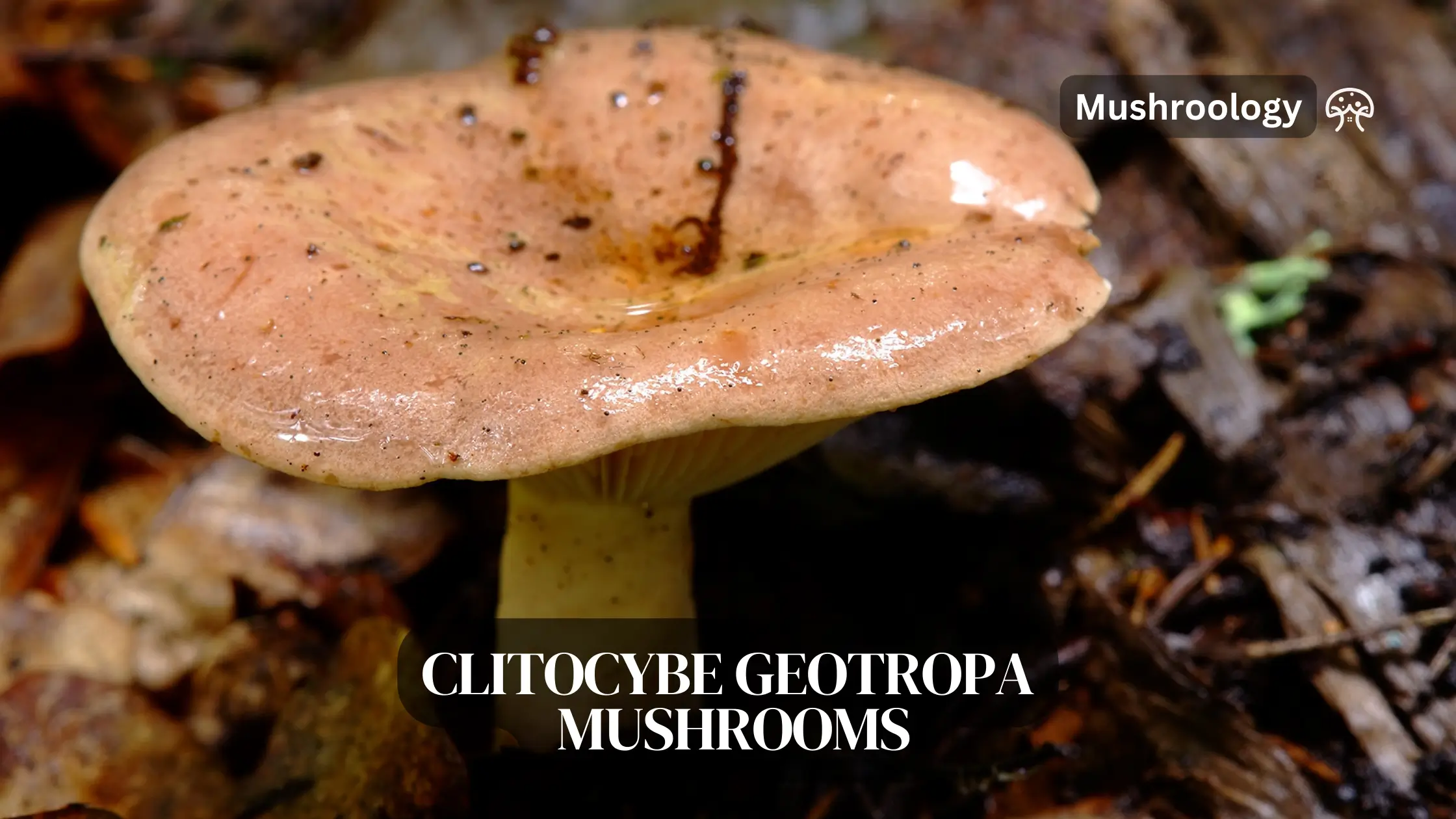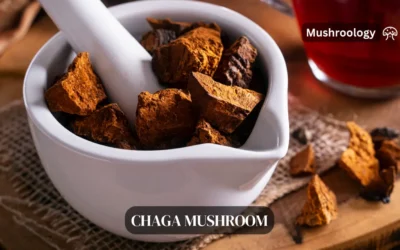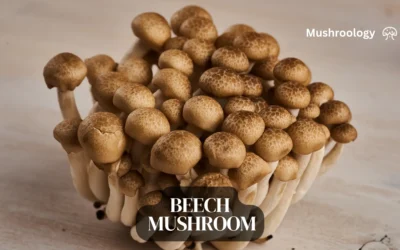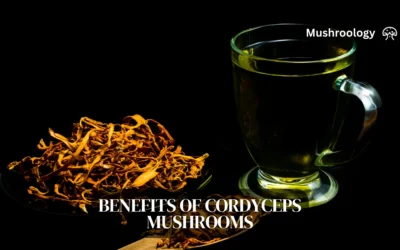Clitocybe geotropa, is a fascinating species within the fungal kingdom. Here are ten scientific facts about this mushroom:
- Taxonomic Classification: Clitocybe geotropa belongs to the genus Clitocybe, known for its funnel-shaped mushrooms. This species is part of the Basidiomycota division, which includes fungi that reproduce sexually through the formation of specialized cells called basidia.
- Common Names: It is commonly referred to as the Trooping Funnel due to its habit of appearing in large, dense groups with cap shapes resembling funnels. It’s also known as the Monk’s Head and the Rickstone Funnel.
- Cap Characteristics: The cap of Clitocybe geotropa can reach up to 20 cm in diameter, starting convex but becoming more funnel-shaped as it matures. The cap color varies from creamy white to pale brown.
- Gill Structure: Its gills are decurrent, meaning they extend down the stem, and are closely packed. The gills are white to cream in color, which contrasts with the slightly darker cap.
- Stem Features: The stem of Clitocybe geotropa is tall, thick, and white, often bulging towards the base. It lacks a ring, which is a common feature in many other mushroom species.
- Habitat: This mushroom is commonly found in deciduous and coniferous forests, particularly under beech and spruce trees. It prefers well-drained soils and is often found in large rings or arcs, a phenomenon known as fairy rings.
- Distribution: Clitocybe geotropa is widely distributed across Europe and North America. Depending on local climate conditions, it appears from late summer to late autumn.
- Edibility: It is an edible species, appreciated for its mild, nutty flavor. However, caution is advised as it can be confused with other toxic Clitocybe species, and some people may experience gastrointestinal upset after consuming it.
- Nutritional Value: While specific nutritional studies on Clitocybe geotropa are limited, mushrooms in general are known to be a good source of vitamins, minerals, and dietary fiber, with low fat and calorie content.
- Ecological Role: As a saprotrophic fungus, Clitocybe geotropa plays a crucial role in forest ecosystems by decomposing leaf litter and other organic matter, recycling nutrients back into the soil.
These facts highlight the intriguing nature of Clitocybe geotropa, from its distinctive morphology to its ecological importance and culinary value. However, as with all wild mushrooms, identification should be done with caution, and consumption should only occur after positive identification by an expert.
Cultivating Clitocybe geotropa, commonly known as the trooping funnel, involves a process that’s somewhat similar to cultivating other mushrooms, albeit with specific requirements suited to its unique characteristics. Clitocybe geotropa is a wild mushroom valued for its large, edible fruit bodies and is often found in woods and forests, particularly under beech trees. While the document you provided detailed the cultivation of Clitocybe maxima, the principles of mushroom cultivation remain broadly applicable, with adjustments for the specific environmental and nutritional needs of Clitocybe geotropa.
Cultivation Overview for Clitocybe geotropa
The cultivation of Clitocybe geotropa, like that of Clitocybe maxima, would likely involve similar stages: substrate preparation, inoculation, colonization, fruiting, and harvesting. However, since Clitocybe geotropa naturally grows in woodland settings, mimicking its natural habitat would be key to successful cultivation.
Substrate Preparation
- Clitocybe geotropa would thrive on a substrate that closely resembles its natural forest floor environment. A mix of hardwood sawdust, enriched with beech wood components if possible, and supplemented with straw and other organic matter, could provide a suitable base.
- The substrate’s moisture content, pH, and nutrient levels would need to be carefully controlled to match the requirements of Clitocybe geotropa.
Inoculation and Colonization
- Spores or mycelium of Clitocybe geotropa would be introduced to the prepared substrate in a sterile environment to prevent contamination.
- The inoculated substrate would then be kept under controlled conditions to allow the mycelium to colonize the substrate fully. This process might take several weeks and requires monitoring for temperature, humidity, and possible contamination.
Fruiting Conditions
- Once colonization is complete, conditions would be adjusted to trigger fruiting. This might involve changes in temperature, light exposure, and humidity, mimicking the transition to autumn, when Clitocybe geotropa naturally fruits.
- Maintaining adequate humidity and providing a slight drop in temperature could be crucial for initiating the fruiting phase.
Harvesting
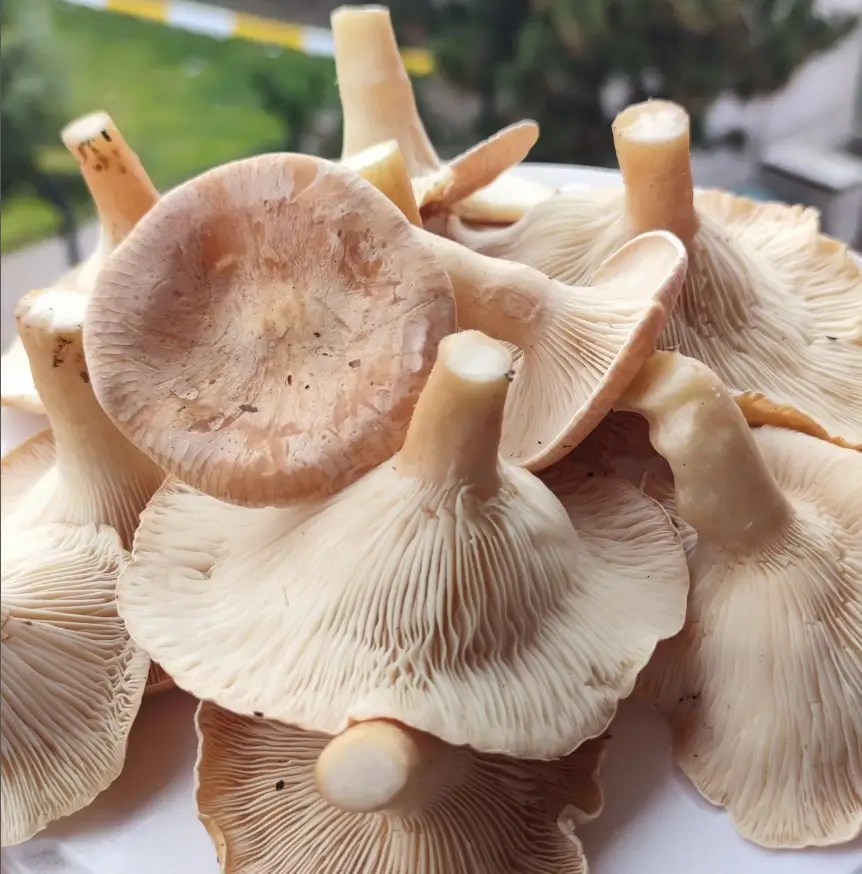
- Mushrooms can be harvested once they’ve reached the desired size. Like Clitocybe maxima, the fruit bodies of Clitocybe geotropa should be cut at the base, avoiding damage to the mycelium to allow for subsequent fruitings.
Challenges and Considerations
- Given that Clitocybe geotropa is less commonly cultivated than other mushrooms, obtaining spawn might be more challenging. Enthusiasts might need to isolate their own mycelium from wild specimens, a process that requires sterility and patience.
- Because Clitocybe geotropa grows in symbiosis with trees, simulating this environment might require innovative approaches, such as incorporating tree root extracts into the substrate or growing mushrooms in proximity to living trees in controlled environments.
Research into the specific needs of Clitocybe geotropa, along with experimentation to optimize growth conditions, would be necessary steps for anyone looking to cultivate this species commercially or as a hobby. As with any mushroom cultivation, cleanliness, patience, and attention to environmental conditions are key factors for success.
FAQs for Clitocybe geotropa
1. What is Clitocybe geotropa?
Clitocybe geotropa, also known as the Trooping Funnel or Monk’s Head, is a large, sturdy cream- or buff-colored funnel-shaped mushroom. It is widely found in Europe and, to a lesser extent, in North America.
2. Is Clitocybe geotropa edible?
Yes, Clitocybe geotropa is considered an edible mushroom. It has a faint smell of bitter almonds and a non-distinctive taste. However, caution is advised as it can be confused with poisonous species.
3. What does Clitocybe geotropa look like?
The mushroom has a cream or buff-colored cap that can reach up to 20 cm in diameter, with a prominent boss in young specimens. As it matures, the cap becomes more funnel-shaped. The decurrent gills are the same color as the cap, and the stipe is bulbous, larger at the base.
4. Where can I find Clitocybe geotropa?
It grows in mixed woodlands, often in troops or fairy rings. It is very common throughout Britain and Ireland and is also found across mainland Europe and in North America.
5. When is Clitocybe geotropa in season?
In Britain and Ireland, it appears from August to early December, but in southern Europe, it can be found a month or more later, occasionally right through to the start of the New Year.
6. How can I distinguish Clitocybe geotropa from poisonous mushrooms?
Clitocybe geotropa can be confused with poisonous species like Clitocybe dealbata and Clitocybe rivulosa. However, these poisonous species do not grow as large as the Trooping Funnel. Always check for a white spore print and the characteristic almond smell to help with identification.
7. What are some common uses for Clitocybe geotropa?
When young and fresh, it can be fried with onions or used in risottos, soups, and many other mushroom dishes. The stems are rather tough, so many people discard them and eat just the caps.
8. What is the taxonomic status of Clitocybe geotropa?
Some authorities now accept this species as a member of a new genus proposed in 2003 by Finnish mycologist Harri Harmaja, recording it as Infundibulicybe geotropa.9. Are there any health benefits associated with Clitocybe geotropa?
Research has indicated that Clitocybe geotropa has neuroprotective, antioxidative, antimicrobial, and moderate cytotoxic activity, highlighting its potential health benefits.

